Editor’s note: Travel writer Lisa Monforton recently returned from a One Ocean Expeditions Atlantic Canada tour with the following Q&A for us.
The highlight of this ambitious Fins and Fiddles adventure, Monforton reports, was her visit to Nova Scotia’s remote Sable Island National Park Reserve — a storied sliver of land inhabited by wild horses and located in the Atlantic Ocean 300 kilometres southeast of Halifax.
During her time on the island, the Calgary-based writer observed these legendary animals (of Acadian and Dutch descent) alongside world-renowned wild horse photographer Debra Garside.
Here, Monforton asks Garside about her longtime relationship with this unique place and how it has shaped, and continues to shape, her life.
Q: Tell us about how your fascination with Sable Island began.
A: Years ago, a friend told me about a documentary featuring Sable Island. Until then, I’d never heard about it. It sounded like it was very difficult to get to, and my first thoughts were “Well, this is going to be a challenge.” But my life has always been about accepting challenges, and within a month I had received permission to visit the island. Today, the permit process goes through Parks Canada. You have to fly in your own food supplies and be completely self-sufficient. It’s much easier to visit with an operation like One Ocean Expeditions.
Q: How did you prepare for your first trip?
A: I never did watch the documentary my friend told me about. I deliberately did not want to see other coverage of the island because I wanted to visit with fresh eyes. That said, I did do enough research to ensure I was prepared with the right gear. When I finally arrived, I was pretty excited. As soon as I got out of the plane, I saw wild horses galloping over the sand dunes and I thought: “Is there any place more spectacular in the world to visit for someone who loves horses?”
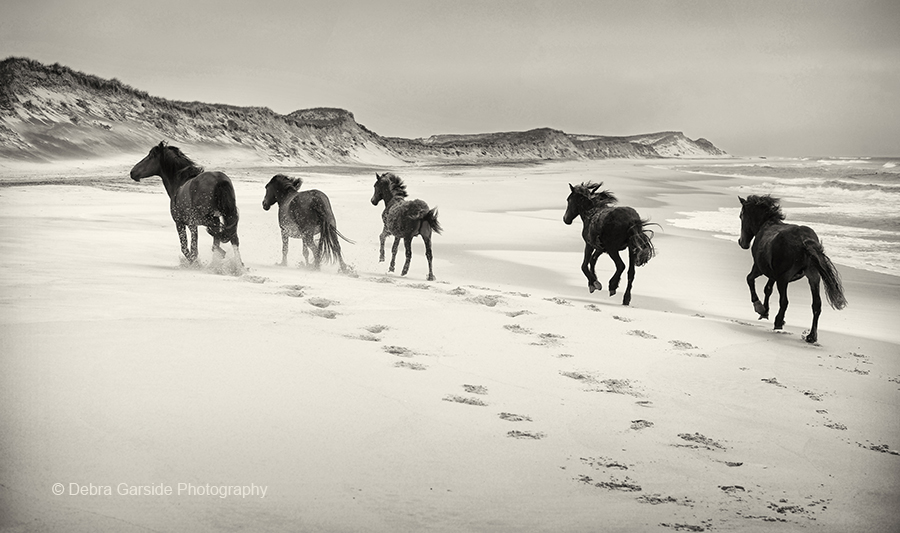
Q: Describe your relationship with the horses when you’re visiting the island?
A: I don’t interact with them because that isn’t my goal. My goal is to be as unobtrusive as possible. I should mention that the connection that I feel for this place isn’t just for the horses — it’s for the island and the horses together. There is a purity here that is extremely rare. Because it’s so remote, the animals are protected from human interference and their behaviour reflects this.
Q: Some say Sable Island has a mystical quality to it. What’s that all about?
A: I’ve heard people say that the island almost glows, that it has an aura. It’s something you may feel, but it’s also something you can see when you’re there. There’s likely a scientific explanation for it. The white sand reflects the moisture in the air and the island, on a nice day, glows in the mist. It’s pretty incredible to behold.
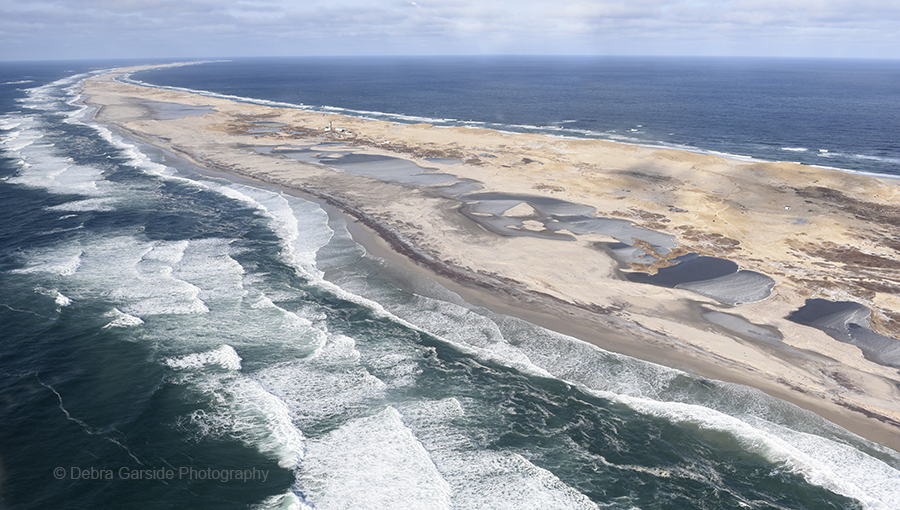
Q: What’s it like to be one of a handful of humans on the island, with only the animals as company?
A: There are always two people in the weather station and two people in the Parks Canada office. Sable Island has a more remote feeling than Antarctica for me. Curiously, despite the loss of life that has taken place in this region (there have been more than 350 shipwrecks in the area since 1583), it doesn’t feel oppressive. For me, Sable Island has a feeling of rebirth, of regeneration. Every time I visit, I sense that. It’s always a very emotional experience.
Q: What’s the difference between what people imagine when they think of this legendary island versus what it’s like on the ground?
A: When people learn there are on average 400 to 450 horses inhabiting the island, they imagine them all together as one giant herd galloping everywhere. In fact, the family groups are really quite small — from a few to up to 15. These groups are scattered around the island so you never get the sense that Sable is overrun with horses. On the other hand, during winter, there are 300,000 grey seals that live here, and you can hardly get around!
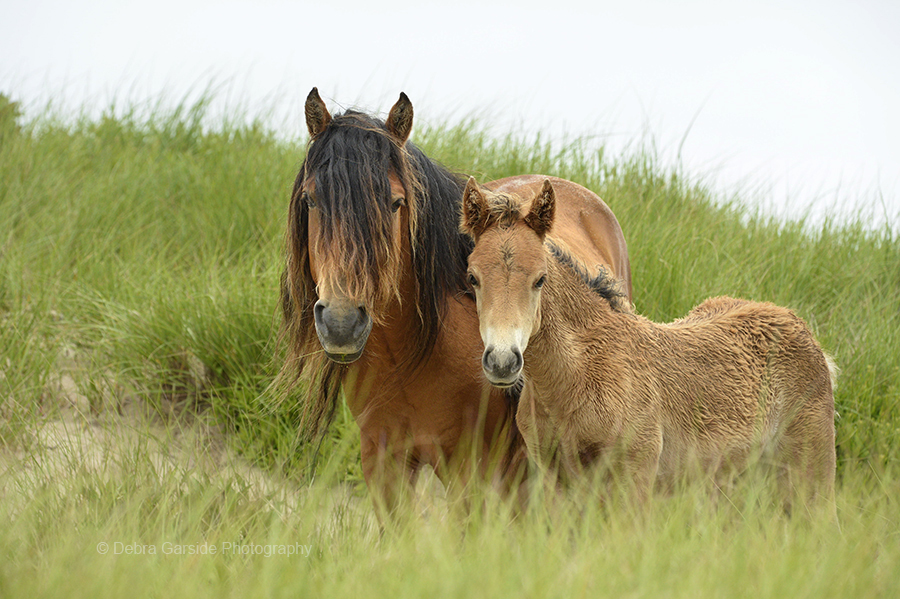
Q: You also lead photography tours in Mongolia. What is it about wild horses that’s so seductive to you?
A: In Mongolia, there are more horses than people and there’s a horse culture that dates back thousands of years. It’s intriguing to me. I grew up with horses. I began reading about wild horses when I was very young. I sketched and wrote stories about them. When I became an adult, training horses and coaching riders became my career. As a result, I can see how different the animals are in the wild. I can see what their unblemished, natural behaviour looks like. A domestic horse, handled by people from the beginning, loses its language and “street smarts.” It doesn’t learn about herd dynamics, pecking order, respect, or how to read horse body language.
Q: What’s your favourite part of Sable Island?
A: There are two places I like for different reasons. The West spit is a lush paradise. It’s horse heaven. The horses are up to their bellies in beach pea, which is like alfalfa. When you stand up on a dune, and you look across the middle valley of that spit, you see little families all over the place. I love it for that. I love the richness of it. The other end of the island is the opposite extreme. It’s more desolate and the sand dunes take on interesting shapes. There are fewer horses because it’s more barren. Photographically, it’s super interesting.
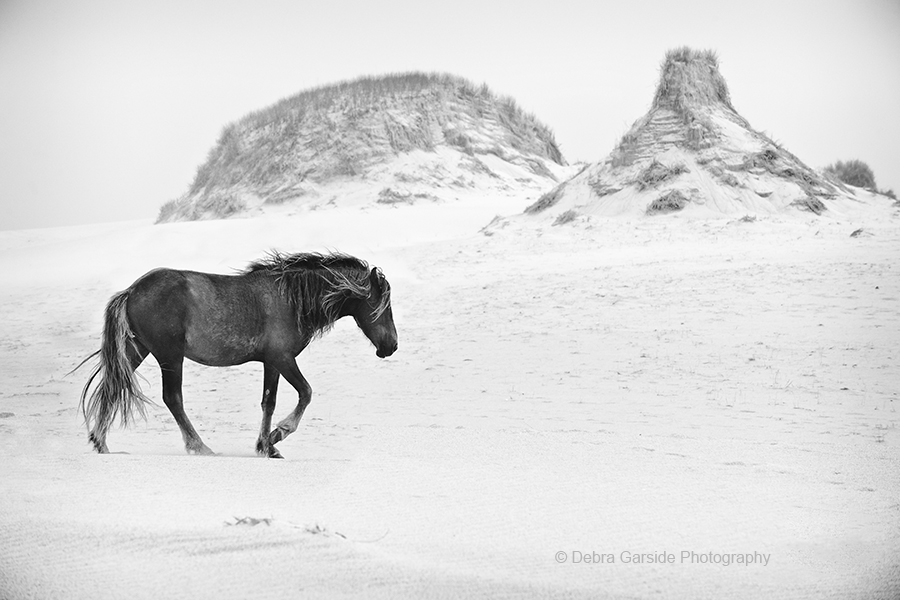
Q: What’s your favourite time of day to photograph the horses?
A: Morning is my favourite time of day. Horses are not early risers. They like to sleep in and when the sun comes up, they stretch and roll and the babies nurse and life starts to get underway. I like to see all of that unfold from sunrise on. As night comes, they start to band together in an open area. This goes back to their instinct to protect themselves from predators. Then, in the morning, the animals have to re-establish their order which involves a range of interesting dynamics.
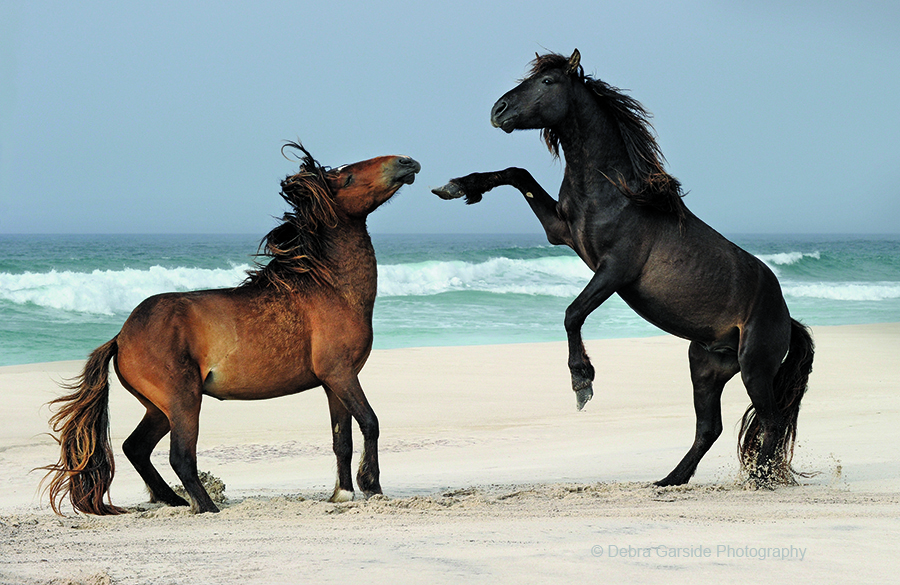
Q: Of all the images you’ve taken, is there one that stands out for you?
A: Journey’s End is the name of the photo (seen below). It was taken at the end of a very long, punishing winter. The horse was walking out to the beach where there was no grass. He was very thin and I could tell he didn’t feel well. He was close to the end of his life. I debated about whether to photograph him at all. But something inside me said ‘you need to do this.’
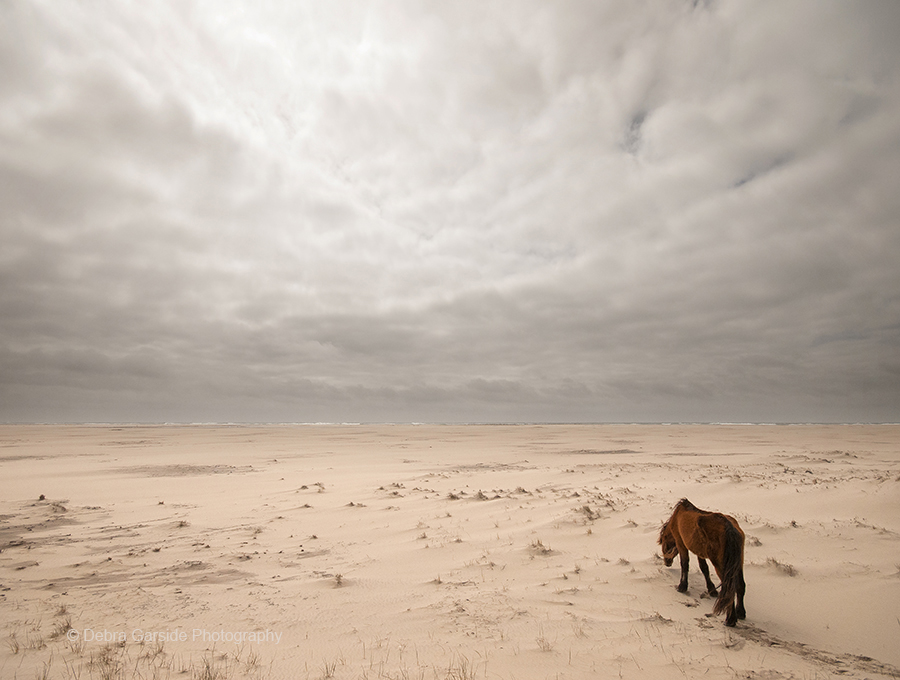
Q: Do you recognize the horses individually?
A: Often, yes. Most of them have a unique marking or maybe it’s the way their mane falls on their neck. But sometimes it’s hard to tell. There are plain black horses with no distinctive markings, so you have to zoom in on their nose hairs to identify the different animals.
Every horse has distinctive “whorls,” which are swirls of hair growing in patterns on their coats. The wrinkles around their lips are also unique. And sometimes, it’s the animal’s character that stands out. The ones that are the most fun to photograph are the bachelor stallions because they run around trying to steal mares, and just generally cause havoc.
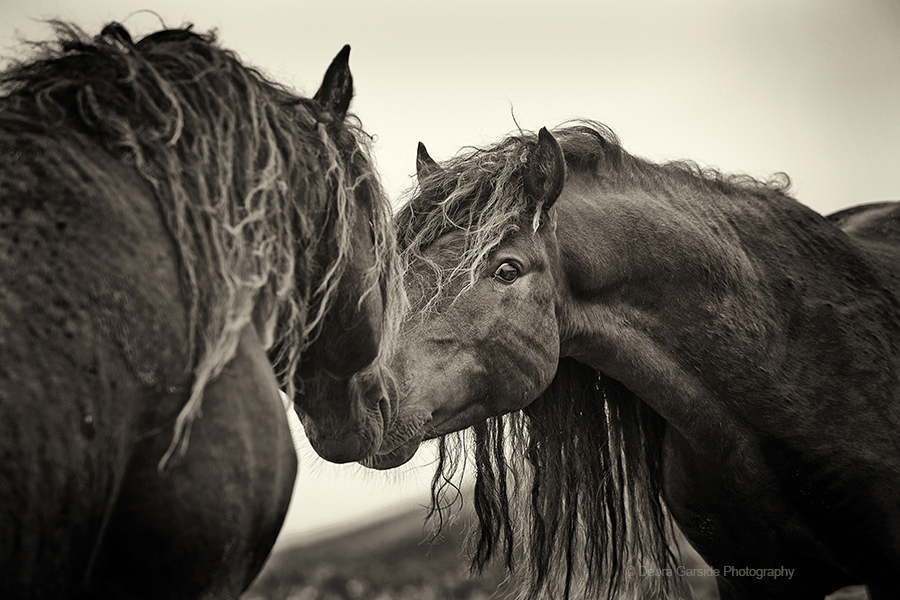
Q: Given your interest in photography, when is the best time to visit the island?
A: Winter is incredible because of the non-stop gale-force winds. There’s no mating behaviour so the horses tend to band together more. But I prefer to go in spring. New foals have been born. The grass is getting green. The horse’s coats are really slick and the bachelor stallions — again, some of my favourites to photograph! — are full of themselves, looking for trouble or fun.
Q: How has your relationship with Sable Island affected your life back in Canada?
A: Not a day goes by when don’t think about Sable Island. I could live there. I love the isolation. I never feel like I’m alone because of the horses. They’re like family to me. I have been to Sable seven times and the more I go, the more I want to return. It’s like a constant longing, kind of like when you’re homesick for a place. If you ask me to explain further, I can’t. It’s a feeling and a connection that’s bigger than me.
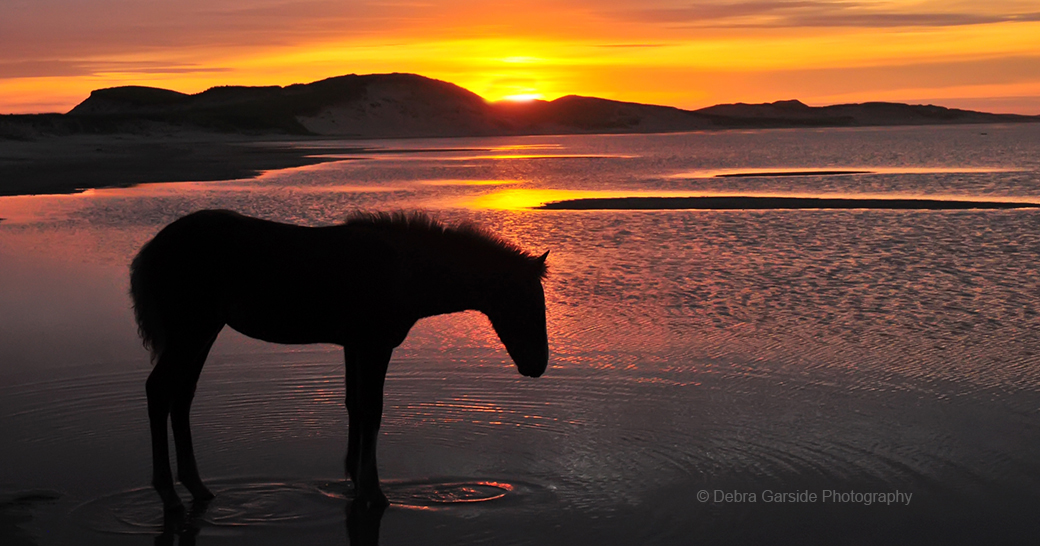
Editor’s note: Lisa Monforton — who also authored Alan Syliboy’s Whimsical World: Ancient petroglyphs spring to life in multi-media artist’s work — was a guest of One Ocean Expeditions, a small ship expedition cruise company that visits Sable Island National Park and Reserve on their Fiddles and Sticks and Fins and Fiddles tours. They did not review or edit this story.
See our earlier coverage featuring One Ocean Expeditions at Awesome Atlantic Canada: One Ocean Expeditions offers family-friendly adventures-of-a-lifetime.
Founded by two Canucks on the loose in a big country, Toque & Canoe is an award-winning Canadian travel blog.


Stacey Diffin commented:
Have you spoken with Sandy Sharkey? She travels around Canada and is a renowned wildlife photographer.
Helena Hexspoor commented:
Wonderful photos and great commentary!